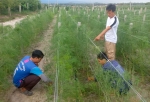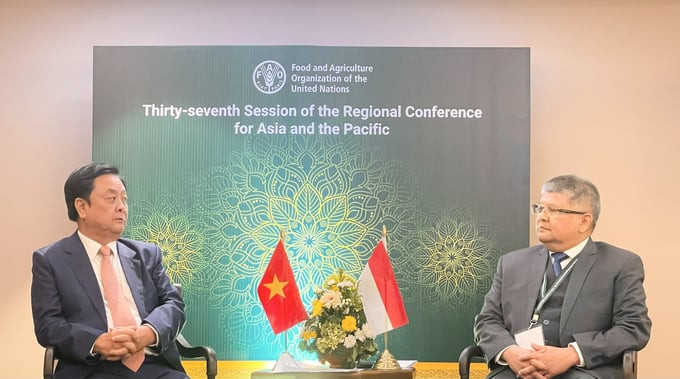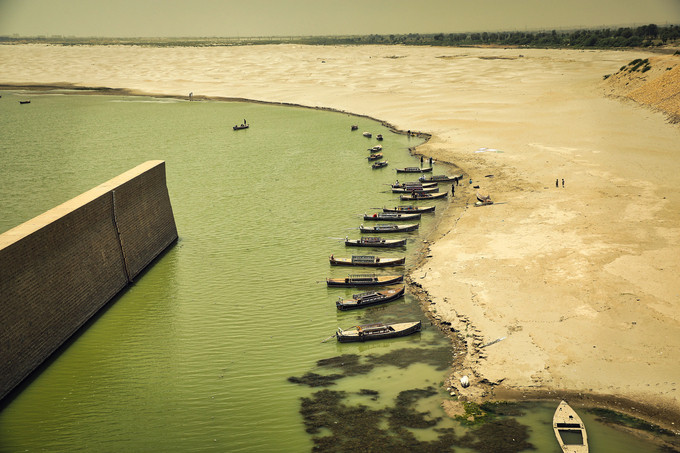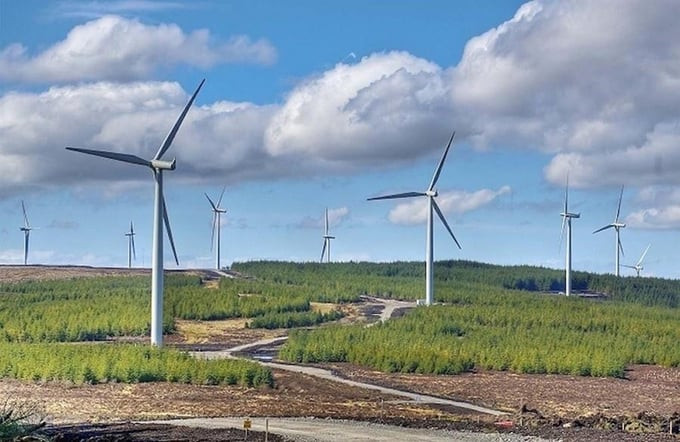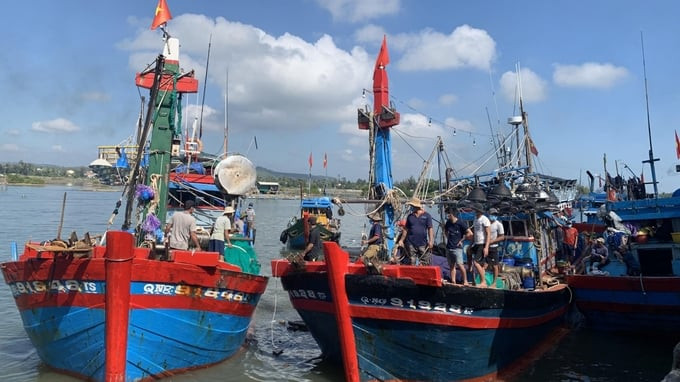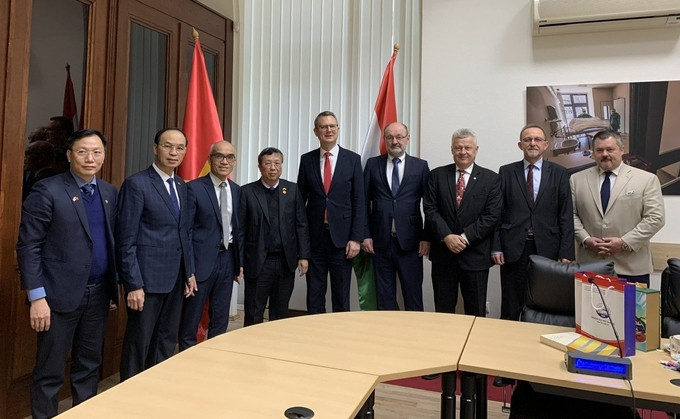Cultivating 2.5 ha of rice himself and collaborating with farmers to grow dozens of ha of seasonal rice, Mr. Le Quoc Viet (Minh Luong town, Chau Thanh district, Kien Giang province) did not spend any investment costs to buy fertilizers and chemical pesticides. Mr Viet's way is to pick up Azolla, propagate them, and then release them into the fields so they can reproduce and grow densely on the water's surface. When aged, Azolla will die, sink, and decompose into organic fertilizer, creating nutrients for rice plants to grow.

Mr. Le Quoc Viet checks up on Azolla in the field
As someone who has worked in the agricultural industry for decades, Mr. Viet did his own experiment to know the amount of Azolla in each rice crop. Waiting for the Azolla to bloom to cover the field's surface, he made a square measure, placed it down and scooped out all the Azolla inside. From the number of Azolla he picked up, he carefully weighed, measured, counted and then multiplied them.
Mr Viet said that for each ha of field surface when Azollahas bloomed densely, the amount of Azolla is equivalent to about 12 - 13 tons. Each summer rice crop lasts more than 6 months, and Azolla reproduces in 2 waves. Thus, during the rice crop, about 24 - 26 tons of Azolla will be decomposed into organic fertilizer to provide nutrients for rice. Therefore, without adding chemical fertilizers, the rice is still green, blooms large flowers and firm seeds, and achieves the expected yield.
Furthermore, each year Mr. Viet only plants one crop of traditional seasonal rice. After harvesting the rice, the land is dried, allowing the land to rest for many months. He let the grasses and vegetables grow naturally, then used a knife to cut them across the roots and bury them in the soil to make green manure. To protect rice from pests and diseases, Mr. Viet raises wild ducks and releases them into the fields so they can eat snails, and raises wild fish to eat pests and hoppers. Mice are caught with traps...
Mr Viet said: “I follow the traditional rice growing method of my grandparents when there was no chemical fertilizer, ploughing the fields with buffaloes. Sown rice seeds grow on their own, absorb nutrients from nature and live. In bad locations, I sprinkle some self-composting organic fertilizer. Harvesting rice, threshing the seeds, drying them, cleaning them, and milling them for eating are all done by hand".
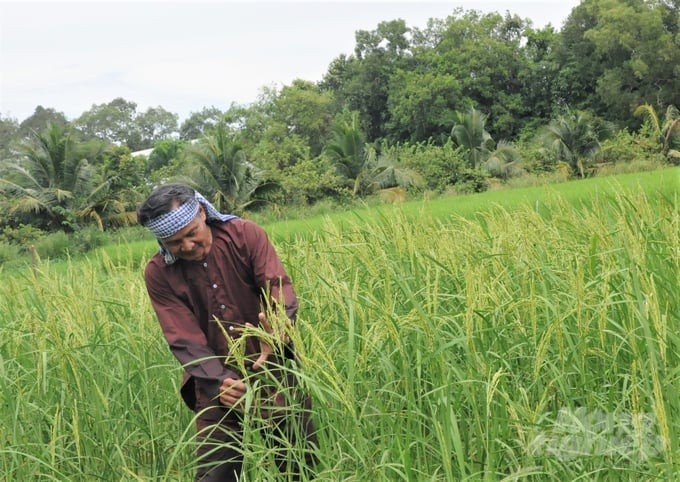
Azolla in the field provides organic fertilizer for the rice plants to grow, creating hand-length rice flowers heavy with grains
To replicate this traditional model of growing organic rice, Mr Viet has collaborated with dozens of farmer households around the area for many years. He provides seasonal rice varieties that have been selected over many seasons. His rice is considered to be good quality rice, suitable for those who like to reminisce about traditionally produced rice and sign off-take contracts for commodity rice when harvested.
At the end of June 2023, after a period of campaigning, Mr. Viet gathered 30 farmers to participate in the summer rice production chain to establish a Creative Farmers Cooperative. This year's rice crop, cooperative members signed a contract to produce 22 ha of seasonal rice using traditional organic processes. The entire rice output will be purchased by Le Gia Company (a member of Mr Viet's family) to process seasonal rice to supply to the market.
To date, there have been a number of seasonal rice products registered by Mr. Viet and certified by Kien Giang province as 3-star OCOP products. With limited quantities, "Tu Viet summer rice - a delicious taste from the past" is quietly entering the market, meeting the needs of customers who want to enjoy delicious traditional rice.
Urine contains nitrogen and phosphorus, two essential nutrients for plant growth. Urine can thus serve as an almost cost-free and locally available nutrient resource for agriculture."Large-scale recycling of human urine faces many technical, socio-cultural, economic, institutional, and ecological barriers," says Dr. Divina Gracia P. Rodriguez at NIBIO, project leader for the project FoodsecURe.
Urine contains nitrogen and phosphorus, two essential nutrients for plant growth. Urine can thus serve as an almost cost-free and locally available nutrient resource for agriculture.
"Large-scale recycling of human urine faces many technical, socio-cultural, economic, institutional, and ecological barriers," says Dr. Divina Gracia P. Rodriguez at NIBIO, project leader for the project FoodsecURe.
New innovations often require change in behavior, habits, and/or incur transaction costs. The researchers will therefore take an analytical approach among various pre-defined stakeholders to determine how the use of human urine for food production can become acceptable in society.
Translated by Hoang Duy






